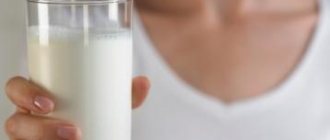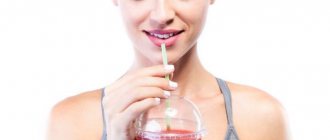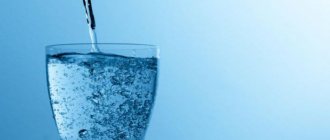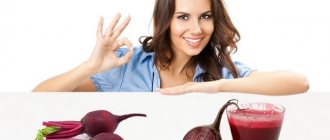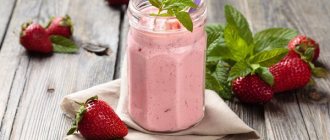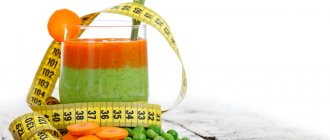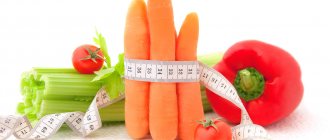The BUTCH diet, or alternating protein and carbohydrate days, was originally developed for athletes. The essence of the diet is to burn fat while maintaining muscle mass.
The BUTCH diet - or protein-carbohydrate alternation - was originally developed for athletes and bodybuilders. The diet was first proposed by American nutritionist James Hunter. The essence of the diet is to alternate protein and carbohydrate days. This alternation allows you to effectively burn excess fat, and your muscles gain definition. The diet goes well with sports training and physical activity and allows you to quickly dry out your body.
Diet principle
The principle of the BUTCH diet is as follows. By limiting carbohydrate foods, the number of calories consumed by the body is reduced. With a lack of carbohydrates, the body begins to use up glycogen reserves. In the following days of the diet, the body does not have time to readjust and begins to use fat as fuel.
If carbohydrate reserves are not replenished in time, muscle cells begin to burn, which is very harmful. In order to prevent this, you should consume as much protein as possible on carbohydrate-free days. In the following days, the body is loaded with carbohydrates. It deceives the body and does not put it into economy mode.
Disadvantages of the BEACH diet
The diet also has its disadvantages:
- The BUTCH diet is not for everyone. The diet is not suitable for people suffering from obesity, varicose veins, kidney disease, diabetes, as well as pregnant and lactating women;
- when limiting fiber in food, problems with the gastrointestinal tract may occur in the form of constipation and other dyspeptic symptoms.

How it works and tips for proper weight loss
A nutritionist-approved protein-vegetable weight loss diet is the real key to healthy yet fast weight loss. Judging by the reviews of those who have completed the recommended period, you can lose up to 8 kg. The principles of nutrition are quite loyal to losing weight, there is no particular hunger, the range of products is large, there is plenty to choose from.
The abundance of protein foods helps you not to feel hungry, and you can independently regulate the portion size if desired. Thanks to fractional meals, additional snacks are not required. After the protein day has passed, it is replaced by a vegetable day. Fiber from unprocessed vegetables and fruits helps maintain normal gastrointestinal function and reduce the load on the kidneys.
General tips for eating on a protein-vegetable diet are quite simple and doable:
- Before experimenting with weight loss, you should consult a nutritionist.
- The rate of metabolism and cleansing of the body from toxins and breakdown products depends on the drinking regime. A glass of water 30 minutes before meals, a glass of water in between meals should be the main rule. The daily norm should not be less than 2 liters.
- The effectiveness of protein and vegetable nutrition, like other diets, depends on the selection of the diet. It is strictly forbidden to eat starchy vegetables and fruits or cook meat with skin on.
- It is better to cook dishes in a double boiler, bake on the grill or stew with water.
- You can regulate the serving size yourself.
- Nutritionists recommend eating peeled fruits and vegetables on this diet.
- A balanced protein-vegetable diet is based on alternating protein and carbohydrate days. You cannot ignore the recommendations for creating a menu or change products to suit your taste.
- Light sports will not only speed up weight loss, but will also allow your muscles to stay toned. If you don’t have the energy to go to the gym, then walking or skating or cycling are ideal.
- The daily salt limit is 5 g; sauces, marinades, and flavor enhancers are prohibited.
Who are protein-vegetable diets contraindicated for?
A consultation with a nutritionist or gastroenterologist will help you not only understand whether the protein-vegetable menu is right for you, but also adjust the set of products if necessary. The general group of those who should not resort to this diet includes:
- pregnant and lactating women;
- people suffering from chronic diseases of the kidneys, liver, gastrointestinal tract, blood vessels;
- children under 18 years of age.
You should not start the fight against excess weight during respiratory diseases or exacerbation of chronic diseases. If at any stage of losing weight you feel unwell, weakness, pain in the side, or dizziness appear, you should stop losing weight.
Advantages and disadvantages
Despite the fact that nutritionists themselves recommend protein and vegetables for weight loss, reviews of the diet are divided into two camps. Some people like the simplicity of preparing dishes and the range of products, while others focus on the excessive duration.
Positive aspects of losing weight on proteins and vegetables:
- quick effect and large loss of volume;
- a set of products is easy to buy anywhere in the world;
- Even the busiest worker or a novice can handle the cooking;
- in 3 weeks a lot of fluid will be lost, the skin will become more elastic, weight loss is due to fat, not muscle mass.
The disadvantages of a protein-vegetable diet include:
- duration, it is difficult for beginners to withstand 21 days;
- a large list of contraindications;
- risk of side effects due to low salt content in the menu.
To make it easier for those losing weight to tolerate a 3-week protein-vegetable diet, nutritionists recommend taking multivitamin complexes and fatty acids in capsules. In addition to nutrition, do not forget about proper sleep and a minimum of stress. Then the body will quickly adapt to the new menu, and the first results will come even faster.
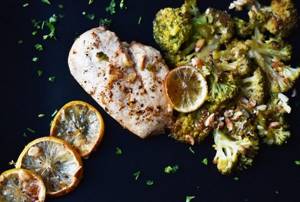
Allowed foods for the BUTCH diet
Foods that are allowed to be consumed on protein days.
- Meat: veal, chicken, lamb, rabbit, lean pork and beef, turkey, pheasant, goose, duck.
- Seafood: squid meat, octopus tentacles, mussels, lobster, shrimp, halibut, hake, flounder, sometimes cod, pink salmon, tuna, salmon, salmon, trout.
- Dairy and fermented milk products: low-fat cheese, natural yogurt, fermented baked milk, dietary cottage cheese, kefir, milk and yogurt.
- Eggs: You can eat as much egg white as you like, one whole egg per day.
Foods that are allowed to be consumed on carbohydrate days.
- Cereals: rolled oats, millet, barley, buckwheat, rice, wheat and others.
- Pasta, pasta and bread: rye bread and pasta, bread and pasta with bran, durum wheat maroons.
- Unsweetened fruits and non-starchy vegetables, greens.
On mixed days, foods for protein and carbohydrate days are equally combined.
From fats, 1 tablespoon of flaxseed or olive oil is allowed.
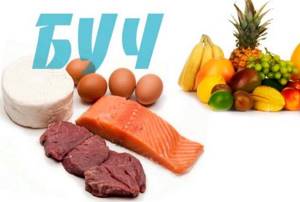
What does this program represent?
BUCH is based on the diet during the day. Most often, the days are distributed as follows:
- Day 1: meals are of a mixed type, that is, you can eat protein and carbohydrate foods - the time of intake is individual;
- Day 2: eat foods high in protein;
- Day 3: similar to the second, products of protein origin are preferred;
- Day 4: The diet consists of foods rich in carbohydrates.
The diet is designed to ensure that the human body does not experience hunger at all. But thanks to a certain system, the process of losing weight proceeds comfortably and quite intensively. During “carbohydrate” days, its activity slows down. But on the days when you should eat protein foods, your metabolism becomes more intense and the weight comes off faster.
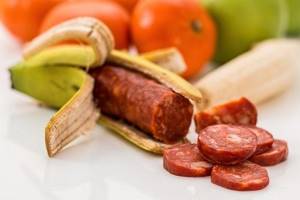
Where to start a BUTCH diet?
The most important secret that will help you avoid breakdowns and withstand dietary restrictions is motivation. Therefore, before starting a BEACH diet, it is worth measuring the initial body parameters. You can take measurements of volumes (chest, sides, waist, legs, hips, arms, calves), you can take control photographs and weigh yourself. This will help you resist temptation and not fall off the BOOCH diet.
- If your diet was correct before the diet, then it is better to start right away with a protein day.
- If the diet was far from rational, then it is advisable to limit the intake of harmful foods on the menu a few days before the diet.
Four-day cycle as the main version of the BEACH diet
The optimal duration of the protein-carbohydrate alternation nutrition model is 1 month. It is maximum permissible to maintain BEACH nutrition for up to 2-3 months and preferably under the supervision of a specialist. In any case, diet is stress for the body, and after this period the body gets used to it, and metabolism decreases significantly.
The most common and convenient version of BCH is a cyclical scheme: “2 protein days (consumption of 3-4 grams of protein per kilogram of body weight and the maximum absence of carbohydrates in the diet) – carbohydrate day (on the contrary, 5-6 grams of carbohydrates per kilogram of weight is allowed 1 gram of protein per 1 kilogram of body weight) – mixed day (carbohydrates and proteins in equal quantities - approximately 2-3 grams per kilogram). After a mixed day, the protein day begins again, and so on in a circle.
The essence of this nutrition system is fat burning by alternating proteins and carbohydrates.
Typically, the body takes energy from consumed fats and carbohydrates, and uses proteins as the main material for the formation of muscles, cells, and tissues. If carbohydrates do not enter the body in sufficient quantities, and fats are also insufficient, then the energy resource will be glycogen reserves in the liver and muscles.
When these resources are depleted, the body is forced to expend subcutaneous fat to obtain energy.
By the end of the second protein day, glycogen reserves are depleted, and the body switches to “energy saving” mode, and metabolism slows down. To prevent this from happening, the menu includes a high carbohydrate day and a mixed day. Then the body relaxes and continues to break down subcutaneous fat.
- Dinner should be protein-rich on all 4 days of the cycle. That is, the proteins allowed on a carbohydrate day should be distributed among the last meals.
- On protein days, it is best to reduce your intake of fats and carbohydrates as much as possible. If your snacks consist of nuts, cheese and seeds, then weight loss will occur slowly.
- Fats should be eliminated as much as possible. To maintain normal functioning of the body, 1 tablespoon of flaxseed or olive oil per day is allowed.
For an example menu, let’s calculate the required amount of macronutrients for a desired weight of 60 kg. On a protein day you need to eat 180-240 grams of protein. On a carbohydrate day, you can eat 300-360 grams of carbohydrates and 60 grams of protein. On a mixed day, you can allow yourself 150 grams of protein and carbohydrates.
The diet involves regular exercise and sports training. Otherwise, the body will not be able to cope with excess carbohydrates and will begin to gain weight.
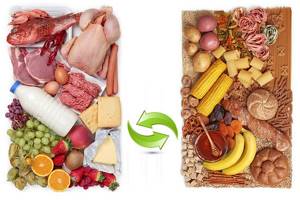
Product selection
Before you begin to figure out what set of products a protein-vegetable diet and menu for 20 days consists of, you need to learn how to choose products. Nutrition is divided into three broad categories:
- permitted products;
- prohibited;
- partially prohibited or limited in quantity.
Authorized products include:
- low-fat dairy products, no more than 2% fat content;
- tomato juice with natural composition;
- fish, egg white, chicken or turkey fillet;
- raw vegetables: mushrooms, green peas, lettuce, asparagus, zucchini, cucumbers, peppers, cabbage, celery, soybeans, tomatoes;
- nuts, seeds;
- natural honey;
- green tea, herbal infusions.
A proper protein-vegetable diet, the menu of which is based on meat, fish, vegetables and fruits, usually follows a 1:1:1 or 2:2 scheme. Protein, vegetable and mixed day or a couple of days on protein and then a couple of days on vegetables. Regardless of the approach, the effectiveness will be the same. The main rule is to refuse what is prohibited and follow the chosen menu.
What to remove from your diet:
- fatty meat with skin;
- offal;
- instant porridge;
- smoked meats;
- canned meat and fish;
- semi-finished products;
- fast food;
- caviar, fatty fish;
- lard;
- dairy products with fat content above 2.5%;
- mayonnaise sauces, ketchup;
- starchy vegetables;
- products with sugar;
- alcohol, sweet soda, strong coffee, black tea;
- pickles and pickled vegetables.
During the recommended three-week period of a protein-vegetable diet for weight loss, the menu for every day practically does not change. Losing weight can always happen on holidays or corporate events, when it is not possible to adhere to nutritional recommendations. If you can’t avoid the feast, then there is a list of partially prohibited foods that can be consumed in limited quantities.
- flour products and sweet pastries;
- sweet soda;
- packaged juices;
- compotes or fruit drinks;
- alcohol, but not more than 50 ml.
Sample menu for a week for the BUTCH diet
1 BUTCH day Protein
- Breakfast : omelet of 3 eggs and 1 tbsp. l. milk, steamed or microwaved. Cucumber and tomato salad with 1 tsp. vegetable oil. Sugar free coffee. Tofu cheese.
- Lunch : boiled chicken fillet with vegetables (broccoli, tomatoes, cauliflower), salt and spices to taste.
- Afternoon snack : low-fat cottage cheese.
- Dinner: lean fish or seafood, lemon, spices to taste, salt.
2 BUTCH day Carbohydrate
- Breakfast: oatmeal with water. A glass of orange juice.
- Lunch: buckwheat soup with vegetables and herbs. Brown rice. Vegetable salad.
- Afternoon snack: milk and banana smoothie.
- Dinner: baked pumpkin. Quinoa porridge. Tea without sugar.
3 BUTCH day Mixed
- Breakfast: cheesecakes with raisins and honey. Kefir. Low-fat cheese.
- Lunch: millet with turkey meat.
- Afternoon snack: baked apples with raisins and nuts.
- Dinner: poultry breast fillet and vegetable salad.
4 BUTCH day Protein
- Breakfast: egg white omelet with shrimp. Salad with tomatoes and lemon juice. Tea or coffee without sugar. A glass of low-fat kefir.
- Lunch: tomato soup made from lean fish. Chicken fillet stewed in kefir. A fresh vegetable salad.
- Afternoon snack: cottage cheese with herbs.
- Dinner: baked duck breast. Salad with squid and lemon juice.
5 BUTCH day Carbohydrate
- Breakfast: buckwheat porridge without butter. A glass of low-fat kefir. Whole grain breads. Apple juice.
- Lunch: creamy zucchini soup. Pasta made from durum wheat. Tomatoes.
- Afternoon snack: cocktail of pear, kiwi and banana.
- Dinner: risotto with tomatoes and basil. Salad with arugula, beans and bell pepper.
6 BUTCH day Mixed
- Breakfast: cottage cheese casserole with raisins and honey. Kefir. Low fat cheese.
- Lunch: buckwheat porridge with turkey meat.
- Afternoon snack: baked apples with raisins and nuts.
- Dinner: turkey fillet and vegetable salad.
7 BUTCH day Protein
- Breakfast: 3 boiled egg whites. Arugula salad with shrimp and mozzarella. A glass of low-fat kefir.
- Lunch: creamy chicken fillet puree with spinach and celery. Turkey fillet pastrami. Cabbage salad with lemon juice and olive oil.
- Afternoon snack: Greek yogurt.
- Dinner: vegetable stew with veal. Salad with squid, fresh cucumber and herbs.
Advice. The BUTCH diet was originally intended for those who engage in speed-strength training, taking into account maintaining the intensity of the load.
What can you drink during a protein diet for weight loss?
During the diet, you can drink tea or coffee without sugar, herbal infusions, and both regular and mineral water. Any fruit juices and sweet drinks are excluded from the protein diet menu for weight loss. When on a protein diet, you can sometimes drink vegetable juices - tomato juice or celery and apple juice. The main thing is that the juice contains a low amount of carbohydrates.
The diet completely excludes any alcoholic drinks to reduce the load on the liver, stomach and kidneys. In addition, alcohol blocks the enzyme pepsin, which breaks down animal protein in the stomach, and if you consume protein foods and alcohol together, you will not only not lose weight, but will most likely “earn” indigestion.
results
BUTCH is not just a diet for weight loss, but a special principle of nutrition. Periods of alternating nutrition were originally developed for athletes and bodybuilders during preparation for competitions. It is not advisable to follow the diet for a long time, but only for several days - a week to achieve maximum results before the competition.
The essence of the diet is that during carbohydrate-free days the body uses up glycogen reserves. And as soon as its reserves are depleted, the body begins to burn fat. If carbohydrate reserves are not replenished in time, muscle cells will begin to burn, which is very harmful.
During a BEACH diet, the body experiences a lot of stress because it has to consume emergency sources of energy - fats and proteins. As a result, muscle mass remains unchanged, and fat is burned.
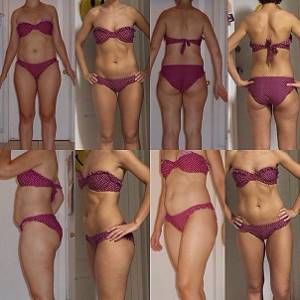
How is “Brush” salad prepared?
It is necessary to peel and grate or chop half a kilo of cabbage, beets and carrots. It is forbidden to cook them, since the main “trick” is that the vegetables are raw. This allows you to cleanse the digestive system of all excess (waste, toxins, etc.) like a stiff brush. All ingredients must not only be mixed, but also thoroughly squeezed. You can season the miracle salad with lemon juice.
If for some reason you don’t like the “Brush”, you can replace the ingredients you don’t like with other vegetables. Of course, you should not consume potatoes, because they contain a lot of starch, and this will slow down the process of losing weight. Do not forget about the drinking regime: the daily consumption of clean water is 1.5-2 liters.

The secret of the action of the “Brush salad” lies in the components that make up it
Now that you are familiar with several protein-carbohydrate diet options, it's time to start working on your forms.
Duration of the BUTCH diet and how to get out of it correctly
Everyone chooses the duration of the BEACH diet for themselves. As already said, it should not last too long. Usually results are visible at the end of the first week. To assess the results of a diet, you should focus primarily on volumes, not weight. During BEACH, weight changes all the time: on protein days, weight loss occurs due to water, and on carbohydrate days, on the contrary, it returns.
Weight and volume reduction directly depend on how much excess fat a person has. If you need to dry out a little, then on a diet you can lose 5 kilograms in a month, and if your fat reserves are impressive, then you can lose 5 kilograms in a week.
Many people mistakenly consider the result of a diet to be the result of the end of the first cycle. It is not right. During a four-day cycle, weight and volume change like a cardiogram.
On protein days, weight loss occurs by 0.5-1.5 kg, but most of this weight is water. Then, on a carbohydrate day, water is bound by the carbohydrates entering the body (and 1 gram of carbohydrate retains 4 grams of water), the same thing happens on mixed days. Therefore, usually at the end of the cycle the weight increases slightly, but this is water, not fat. After 4 cycles (minimum 3), you can already evaluate the results of the BEACH diet, whether this diet plan works specifically in your case or not.
It’s easy to get out of the BUCH. After the last mixed day, it is best to do a week of “mixed days.” You can say this is a normal balanced diet. Then you can gradually begin to include goodies in the menu, but you should observe moderation and not allow yourself to eat such food too often.
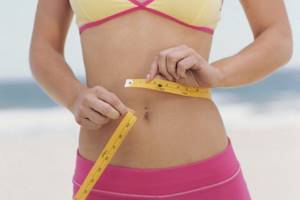
Fat burners
You can stimulate fat burning with special sports nutrition (for example, L-carnitine, Nutrex, MusclePharm and others). Such drugs inhibit the synthesis of fats, accelerate their elimination and reduce appetite. However, you can speed up your metabolism naturally:
- The most powerful natural fat burner is sports. A smart approach to your workout program will help you lose weight and tone your muscles.
- Pure water. Necessary for removing toxins and better absorption of protein. On Butch carbohydrate days, we recommend drinking sugar-free compotes made from dried fruits or seasonal fruits.
- Spices. Seasonings will make the dish tastier and speed up weight loss. Ginger, cardamom, rosemary, mustard, basil, sage - this is not a complete list of herbs that cleanse the body, remove waste and toxins and dull the feeling of hunger.
Classes and workouts during the BEACH diet
In order to effectively lose weight, you need to exercise about 3 times a week. Try to have your workouts coincide with carbohydrate or mixed days. Then the body will have enough energy to complete them.
The training process during BCH has its own characteristics. It should be taken into account that on protein days, practically no carbohydrates and fats enter the body.
If the workout falls on a carbohydrate or mixed day, then you can do it as usual, there will be enough energy for exercise. If you exercise on a protein day, then preference should be given to aerobic training (after days of carbohydrate loading there will be enough energy and strength); if the training falls on the second protein day, then it is better to give preference to strength training (maximum weight, minimum number of repetitions, mainly up to 5).
The training schedule for a four-day BCH looks something like this:
- 1 protein day - training will ensure renewal of muscle tissue and slight fat burning, exercise according to the usual scheme: 5-10 minutes of cardio, 40 strength, 30 minutes of cardio;
- Protein day 2 - training will help you get rid of excess fat and separates muscles, exercises: 5 minutes of cardio - about an hour of strength training with maximum weight, 4 sets of 5 repetitions - 20 minutes of cardio;
- high-carbohydrate day - energy for training, you can focus on those exercises that are difficult or work on the correct technique;
- a mixed day is a great day to work out beautiful muscle definition: you should do strength training, 4 sets of 10 repetitions.
Reviews from nutritionists
Irina, doctor, St. Petersburg
Protein-carbohydrate alternation is one of the most strict diets. It can be used by athletes involved in certain sports to lose weight before competition. During the BEACH diet and after it, it is better to be under the supervision of a doctor. Before starting the BEACH diet and after it ends, you should undergo tests in order to assess the condition of the body. The diet is contraindicated for people with chronic diseases, notes nutritionist Irina Sitnikova.
Benefits of alternating protein and carbohydrate foods
- This is an excellent alternative to fasting; during “protein” days, the body gradually gets used to low-calorie foods;
- The digestion process is normalized, metabolism is improved;
- During the day with a certain consumption of foods, you can include your favorite dishes in your diet;
- Food has taste, the body responds to the smell, fasting days based on protein foods do not become painful;
- The body is freed from fat, and muscle mass, on the contrary, increases in volume.
The process of protein-carbohydrate alternation is necessary so that the body, experiencing carbohydrate starvation, begins to look for other sources of energy replenishment. Without receiving the usual amount of carbohydrates, the body transforms energy by turning to fat deposits. In this way, excess weight gradually disappears, muscle mass is redistributed, and cells are quickly cleansed of toxins.
